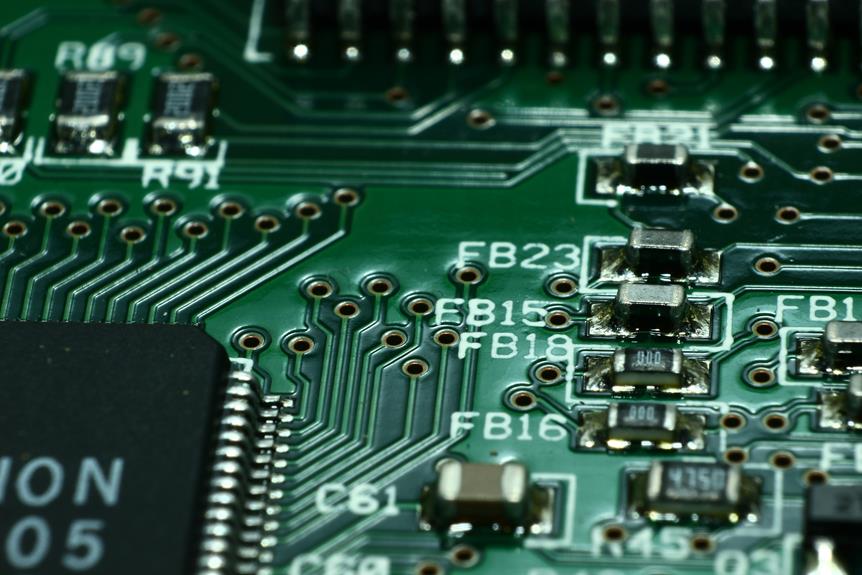Monsanto's PCB Lawsuits: Victims Seek Justice
In a storm of litigation, Monsanto, faces numerous lawsuits over the production of Polychlorinated Biphenyls (PCBs), a chemical linked to severe health risks. Despite knowing the dangers, Monsanto continued production until a 1979 ban. This article delves into the ongoing legal battles, the compensation victims are seeking, and Monsanto's accountability in this health crisis.

Understanding PCB Exposure Lawsuits
Navigating the complexities of PCB exposure lawsuits requires a deep understanding of both the legal process and the potential damages that victims may be entitled to claim. Central to these lawsuits is Monsanto's accountability. As the primary manufacturer of PCBs, Monsanto was aware of the health effects associated with PCB exposure, yet continued its production and sale. Multiple lawsuits have been filed against the company, with plaintiffs alleging they developed serious health conditions, including various forms of cancer, due to PCB exposure. These lawsuits aim to secure compensation for victims, covering medical expenses, lost wages, and pain and suffering. The resolution of such lawsuits holds Monsanto accountable, offering victims a chance at justice and underscoring the risks of PCB exposure.
Monsanto's PCB-Related Accountability
In this context, it is crucial to delve deeper into Monsanto's specific accountability regarding PCB-related health issues and the legal actions taken against the company. Monsanto's transparency efforts have been the subject of criticism, with victims and their advocates claiming the corporation knew about the severe health risks associated with PCBs, yet continued to manufacture and distribute them. These accusations have led to a series of lawsuits, putting Monsanto's accountability under intense scrutiny. Furthermore, the issue of PCB contamination in the food supply chain adds another layer to the company's accountability. Despite settlements in some cases, many victims continue to seek justice, underscoring the need for further investigation and action towards Monsanto's role in this widespread public health issue.
Compensation From PCB Exposure Lawsuits
Numerous victims of PCB exposure have filed lawsuits against Monsanto, seeking substantial compensation for the severe health effects they have endured. These lawsuits aim to secure fair potential settlements to cover the cost of medical treatment, loss of income, and personal suffering due to long term health effects. The courts have acknowledged the legitimacy of these claims, with settlements reaching into the millions. One noteworthy case saw a $550 million settlement in June 2021. Municipalities have also sought compensation for the costs of monitoring, testing, treating and remediating PCB-contaminated water. The pursuit of justice continues for victims, with the hope that these lawsuits will bring about adequate compensation and heightened corporate accountability.
Monsanto's Major Settlements
While there have been numerous lawsuits against Monsanto regarding PCB exposure, several major settlements stand out due to their significant financial implications and the precedence they set for corporate accountability. These settlements have highlighted the substantial financial impact on Monsanto, with settlements ranging from $25 million to a staggering $698 million. One notable case was concluded in June 2021, where a $550 million settlement was reached. These lawsuits are not just about monetary compensation, but recognition of the long-term health effects caused by PCB exposure, including various types of cancer and immune system disorders. The significant settlements serve as stark reminders of the immense responsibility corporations have to ensure their products do not harm the public.
The Wide Use of PCBs History
Understanding the wide use of PCBs requires delving into a history laden with industrial and commercial applications that spanned five decades.
- PCBs, or polychlorinated biphenyls, were widely used from the 1930s until their ban in 1979.
- They were found in a variety of everyday products such as electrical equipment, paints, and plastics, contributing to a ubiquitous presence that led to widespread PCB exposure in the general population.
- Even after their ban, PCBs continue to persist in the environment due to their chemical stability and resistance to degradation.
- This has resulted in ongoing exposure risks, particularly in older buildings where PCB-laden materials might still be present.
The pervasive use and lasting presence of PCBs have had profound implications for public health and environmental integrity.
Locations of PCB Contamination
Amid the ongoing litigation involving Monsanto's PCBs, identifying contamination sites has emerged as a crucial issue in the quest for justice. The locations of PCB contamination span across various industrial sites, commercial buildings, and schools notably built before the 1979 ban. These sites have become areas of concern due to the future implications of PCB exposure among occupants. Prolonged exposure can lead to severe health issues, including various types of cancer and adverse effects on the immune and reproductive systems. The identification and remediation of these locations are fundamental in mitigating the risk of future PCB exposure. Therefore, understanding the scale and distribution of PCB contamination sites is critical to addressing the legacy of Monsanto's PCBs and ensuring the safety of the public.
Health Risks: PCB and Cancer
The carcinogenic properties of PCBs, long produced and marketed by Monsanto, have been a significant focus in a slew of lawsuits against the company, given the severe health risks associated with prolonged exposure to these hazardous chemicals. PCBs have been linked with various types of cancer, emphasizing the critical importance of implementing effective PCB exposure prevention strategies.
- PCBs in the environment persist due to their chemical stability and resistance to degradation.
- Prolonged exposure can result in skin conditions, liver damage, and an increased risk of cancer.
- PCB exposure prevention strategies involve removal or sealing of PCB-containing materials and regular monitoring of PCB levels.
- Community education about the dangers of PCBs and how to avoid exposure is another crucial aspect of these strategies.
Other Health Effects of PCB Exposure
Beyond the carcinogenic risks, PCB exposure can lead to a spectrum of adverse immune, endocrine, and reproductive effects. Particularly concerning is PCB exposure in children, a vulnerable population with developing systems. Studies have associated exposure with cognitive deficits, growth retardation, and behavioral problems. The long term effects of PCB exposure are equally worrisome, with persistent changes in the immune and endocrine systems, increasing susceptibility to infections and disrupting hormone functions. Reproductive effects include reduced fertility and adverse pregnancy outcomes. Moreover, metabolic diseases like diabetes and cardiovascular complications have been linked to PCB exposure. These diverse health effects underline the urgency for justice for victims and stringent measures to prevent future exposures.
PCB's Impact on the Immune System
Significant exposure to PCBs can result in severe alterations to the immune system, including reduction in the size of the thymus gland and a compromised immune response.
- The thymus gland, integral to the immune system, can be significantly reduced in size due to prolonged PCB exposure, diminishing its ability to produce T-cells, the body's disease-fighting cells.
- PCBs have been linked to functional abnormalities in the immune system, leading to increased susceptibility to infections and diseases.
- PCB exposure lawsuits have been filed by victims suffering from immune disorders, seeking justice and compensation for health damages.
- There is a correlation between PCBs and thyroid hormones, with research indicating that PCBs can interfere with normal thyroid function, further compromising the immune system.
Understanding the impact of PCBs on the immune system is crucial in assessing the full extent of damages in PCB exposure lawsuits.
Endocrine and Reproductive Effects of PCBs
Exposure to PCBs has profound effects on the endocrine and reproductive systems, leading to a multitude of health issues. PCBs have been shown to disrupt hormonal balance, which can lead to fertility problems. Numerous studies have linked PCBs and fertility issues, with exposure potentially causing decreased sperm quality and count in men and menstrual cycle disruptions in women. The damaging effects of PCBs are not limited to adults; PCB exposure in children can lead to developmental issues and early onset puberty. Alarmingly, children can be exposed to these hazardous chemicals in their daily environment, including schools and homes. Therefore, it is crucial to address the potential health risks associated with PCB exposure and ensure stringent measures are in place to protect public health.
Legal Process for PCB Exposure Lawsuits
Victims of PCB's detrimental health effects have recourse through the legal process of PCB exposure lawsuits. Understanding PCB exposure lawsuits involves appreciating the complex interplay between toxic tort law, environmental regulations, and corporate responsibility.
- Lawsuits filed against Monsanto, the manufacturer of PCBs, focus on the company's awareness of the health risks and its continued production of these chemicals.
- The legal process for these lawsuits involves providing substantial evidence of PCB exposure and its harmful health effects.
- PCB exposure and environmental regulations form the basis of these lawsuits, with violations of these regulations often being a key component of the case.
- Compensation sought in these lawsuits can include medical expenses, lost wages, and damages for pain and suffering.
This process provides a pathway to justice for victims of PCB exposure.
Possible Compensation for PCB Victims
While these lawsuits provide a critical pathway to justice, they also present an opportunity for victims of PCB exposure to seek substantial compensation for their suffering and losses. Legal remedies for PCB exposure include reimbursement for medical expenses, lost wages, and damages for pain and suffering. The extent of possible financial compensation depends on the severity of the health impact, extent of exposure, and the specific circumstances of each case. It is crucial for PCB exposure victims to consult with experienced legal professionals to understand their rights and potential compensation. With numerous successful cases against Monsanto, there is a precedent for holding the corporation accountable for its actions, offering hope for victims seeking justice and compensation.
Legal Representation for PCB Victims
One should carefully consider the importance of obtaining skilled legal representation when pursuing compensation for health issues caused by PCB exposure. Navigating the PCB litigation process can be complex and requires a deep understanding of related environmental laws and regulations.
- Experienced attorneys can facilitate the collection of admissible evidence, substantiate claims, and strive to maximize the compensation.
- The legal fees for such cases are often contingent-based, meaning fees are only paid if the case is won.
- Skilled lawyers can also expedite the litigation process, which can be especially beneficial for victims suffering from severe health conditions.
- Lastly, a seasoned attorney can negotiate on the client's behalf, potentially resulting in a more favorable settlement.
Future of PCB Litigation in Vermont
Moving forward in time, the landscape of PCB litigation in Vermont is expected to undergo significant changes as more victims seek justice for their health issues caused by PCB exposure. The future implications of these lawsuits could potentially reshape the state's environmental regulations, pushing for stricter measures against chemical exposure. Vermont's legal battles against Monsanto, the company at the epicenter of these lawsuits, are far from over. As more people become aware of the health risks associated with PCBs, the number of lawsuits is predicted to rise. These cases may set a precedent for future claims, prompting the need for more comprehensive environmental policies. This evolving legal situation underscores the urgent need for robust regulations to guard against future public health crises caused by hazardous substances like PCBs.
Timeline for PCB Testing in Schools
Regularly, schools built before 1980 in Vermont are being tested for PCB contamination, a crucial step in ensuring the safety of students, teachers, and staff. The timeline for PCB testing involves a phased approach, aimed at providing a comprehensive picture of the scope of the problem.
The PCB exposure prevention strategies include:
- Initial surveys to identify potential sources of PCBs.
- Detailed investigations where PCBs are likely to be found.
- Risk assessments to determine the extent of the contamination and potential health risks.
- Remediation actions to eliminate or minimize exposure.
These steps are vital for the health and safety of those within the schools, and are part of larger efforts to hold responsible parties accountable for PCB-related damages.
Frequently Asked Questions
What Was the Main Reason Monsanto Continued to Produce PCBs Despite Being Aware of Their Harmful Effects?"
Monsanto's motivation to continue producing PCBs, despite being aware of their harmful effects, was primarily economic. The significant profits derived from the widespread use of PCBs in various industries outweighed the safety concerns. This decision highlights a classic dilemma faced by many corporations: profit versus safety. Unfortunately, in this case, the choice led to adverse health effects for many individuals, resulting in numerous lawsuits against Monsanto.
Are There Any Safe Levels of PCB Exposure, or Is Any Amount Considered Harmful?"
While PCB bioaccumulation can occur even at low exposure levels, there is no universally agreed upon 'safe' level of PCB exposure. Any amount of PCBs in the body can potentially cause harm due to their toxic and carcinogenic properties. The health implications associated with PCB exposure, such as cancer and endocrine disruption, further underscore the potential risks, even at lower exposure levels. As such, minimizing exposure to PCBs is critical for health safety.
Is There Any Way to Completely Remove PCB Contamination From Older Buildings, or Does It Always Pose a Risk?"
Complete removal of PCB contamination from older buildings is possible through various PCB disposal techniques. These include encapsulation, removal and replacement, and thermal destruction. However, improper handling or disposal can pose significant health implications, such as cancer and immune system disorders. Therefore, it's crucial that professionals who specialize in hazardous waste management conduct the decontamination process to ensure safety and eliminate any residual risk.
What Are Some Measures Schools and Other Institutions Can Take to Prevent PCB Exposure?"
Schools and other institutions can deploy several PCB Mitigation Strategies and Exposure Prevention Techniques to curb PCB exposure. These include frequent air quality testing, removal or encapsulation of PCB-containing materials, and use of HEPA filters to reduce airborne PCB particles. Like a gardener meticulously removing weeds, institutions must also conduct regular inspections and maintenance to ensure that PCB contamination is effectively managed and further exposure is prevented.
How Has the Legislation Regarding PCBs and Their Usage Evolved Since Their Ban in 1979?"
Since the 1979 ban on PCBs in the U.S., legislation has evolved to address PCB contamination and disposal. However, PCB legislation loopholes exist, allowing PCBs in certain closed systems. Internationally, the Stockholm Convention in 2001 prohibited PCB production with a goal to eliminate their use by 2025. These legislative efforts aim to mitigate the environmental and health risks posed by PCBs, reflecting a growing global consensus on the need for stringent control measures.

This post has been generated by AI and was not reviewed by editors. This is Not legal advice. Please consult with an attorney.




